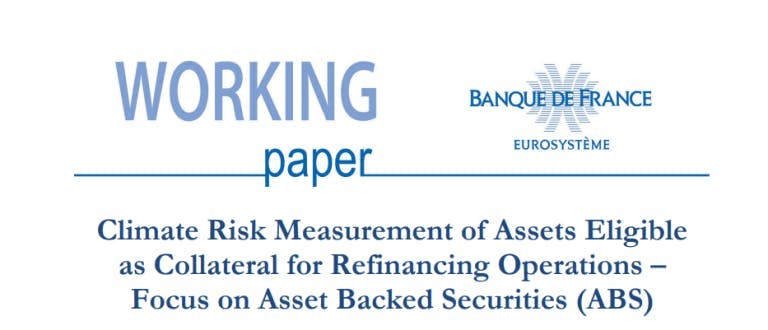CLIMATE RISK MEASUREMENT OF ASSETS ELIGIBLE AS COLLATERAL FOR REFINANCING OPERATIONS
2022-03-07
Banque de France Working Paper No. 858
By André Loris, Grept Alice, Laut Nadia, Plantier Gabriel, Sapey-Triomphe Zako, Weber Pierre-François
This report describes an exploratory study regarding exposure to climate risk of ABS, an asset class frequently pledged as collateral in the ECB refinancing operations. ABS are notes backed by multiple loans, mainly issued by commercial banks. This paper focuses on a model that could best approximate the carbon footprint of Auto and SME ABS, considering the data available on the underlying loans and assets. Two aspects largely determined this purpose: the availability and quality of the extra-financial information provided, and the possibility of linking them to external databases on climate exposure or impact. The ultimate goal was to come up with an alignment metric, i.e. to judge whether ABS-related emissions would meet the Paris Agreement’s objectives. The working paper’s authors, therefore, explored the possibilities of combining ABSs loan-by-loan data with relevant indicators to assess their environmental footprint, a task hindered by the lack of data available.
Several conclusions emerged from the analysis: it seems difficult to accurately assess Auto and SME ABS climate risk at this stage, although there are ways of building a proxy. Keeping in mind the data-related limits, the authors developed a climate impact assessment that is dynamic, differentiating, and consistent. Without necessarily being able to measure a concrete impact, they carved a series of indicators to serve as a reference, as well as an analytical and monitoring tool for the composition of ABS portfolios. However, an improved and harmonized framework for the provision of non-financial information is essential to achieve an accurate analysis of ABSs exposure to climate change.
Read the PDF